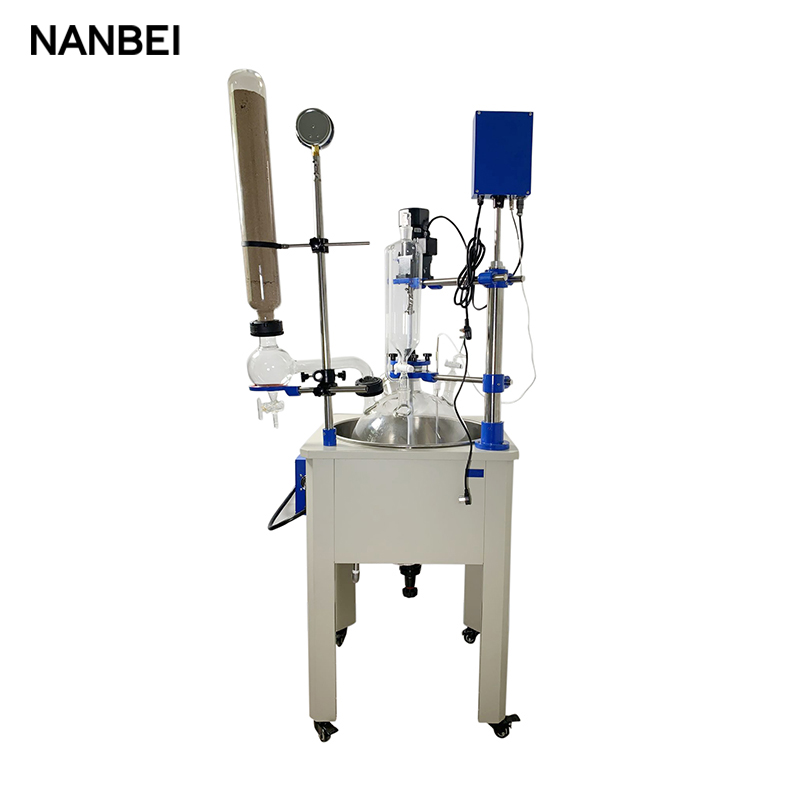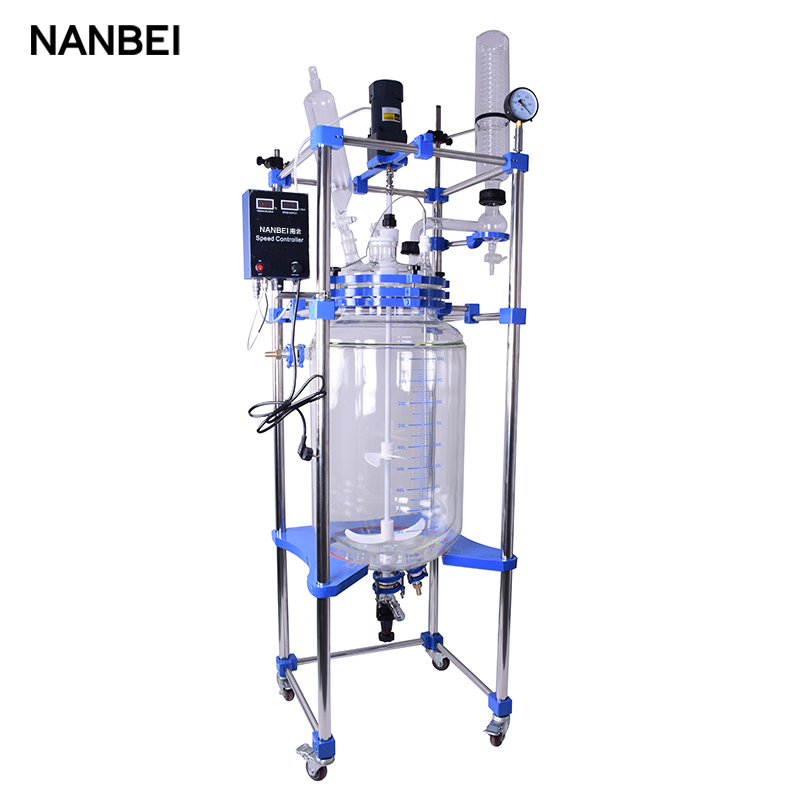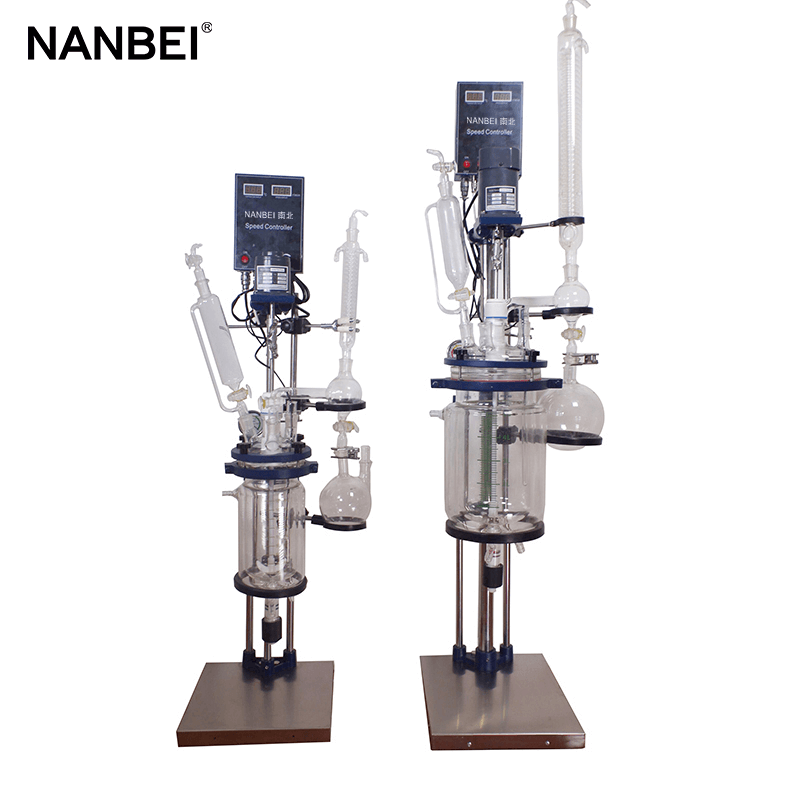 Mobile: +86 15890068607
Mobile: +86 15890068607
 Email: bella@nanbei-china.com
Email: bella@nanbei-china.com
 Mobile: +86 15890068607
Mobile: +86 15890068607
 Email: bella@nanbei-china.com
Email: bella@nanbei-china.com
Glass reactor is commonly-used equipment in laboratories, mainly for experiments such as material synthesis, distillation, and concentration. The structure of the kettle body is divided into three types, namely single layer glass reactor, jacketed glass reactor and three-layer glass reactor. The kettle can be pumped to a negative pressure state as needed to meet the experimental conditions.

The main application of glass reactor:
1. Glass reactors are used in university laboratories for heating or cooling of reaction materials, experimental synthesis, catalysis or chemical reactions under other inert gas conditions;
2. In energy industry, it can be used for fuel cells, catalytic reaction, filtration and washing, etc.;
3. It is used in chemical synthesis, reflux, distillation, concentration, crystallization, extraction, etc. in biomedicine, and can be equipped with constant temperature circulator;
4. In cosmetics field, it is used for material dispersion, emulsification, homogenization, mixing, extraction, etc.;
5. It is used for solvent recovery, single-component distillation, multi-component fractionation, rectification purification or chemical synthesis in petrochemical industry.

The glass reaction system kit includes glass unit, stirring unit and integral stand. The overall support and the kettle body fixture of chemical glass reactor are specially designed and processed, which is convenient for users to quickly install or disassemble, and the whole system is easy to replace and clean.

* HOT ARTICLE
Welcome to the official website of the Nanbei Group *